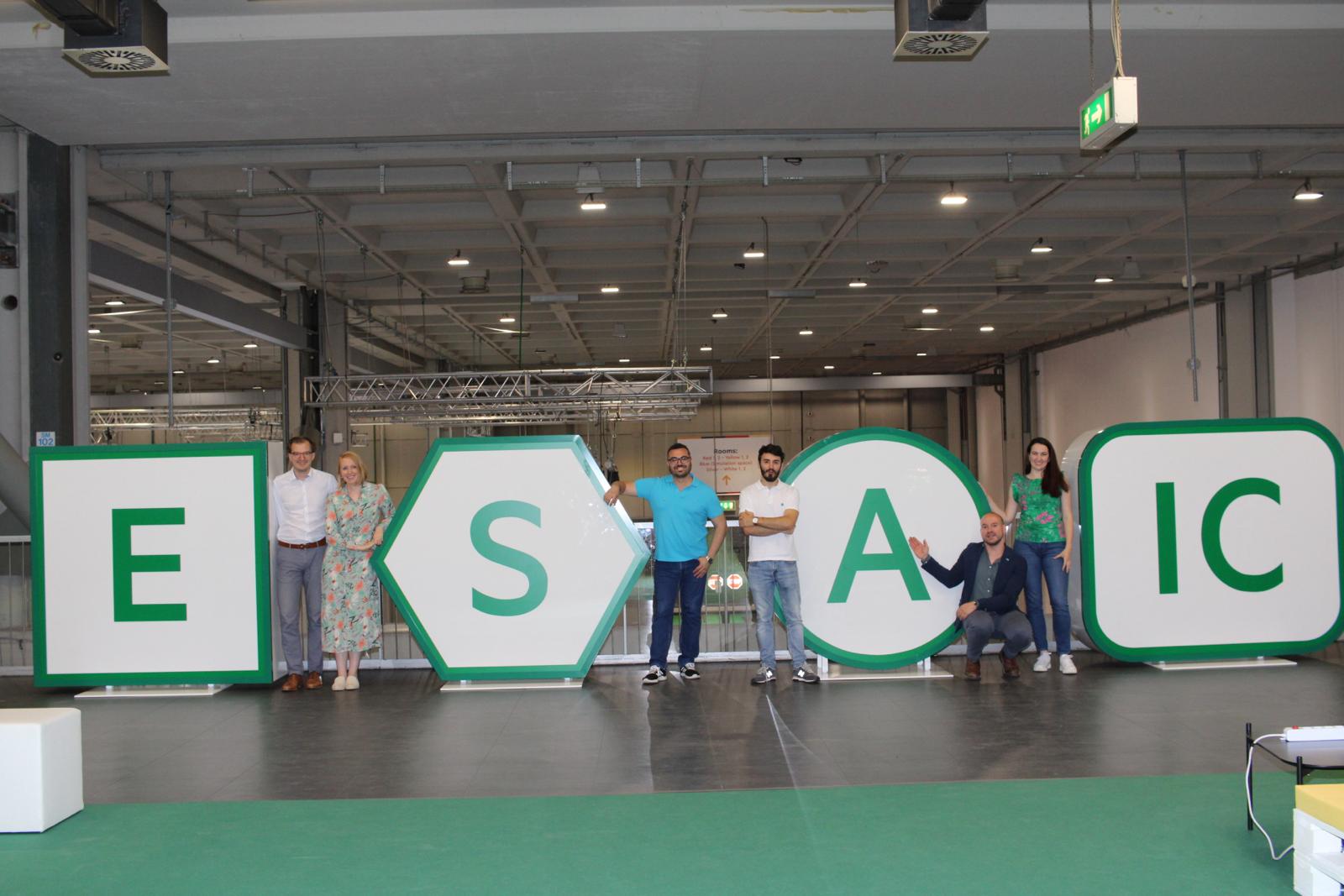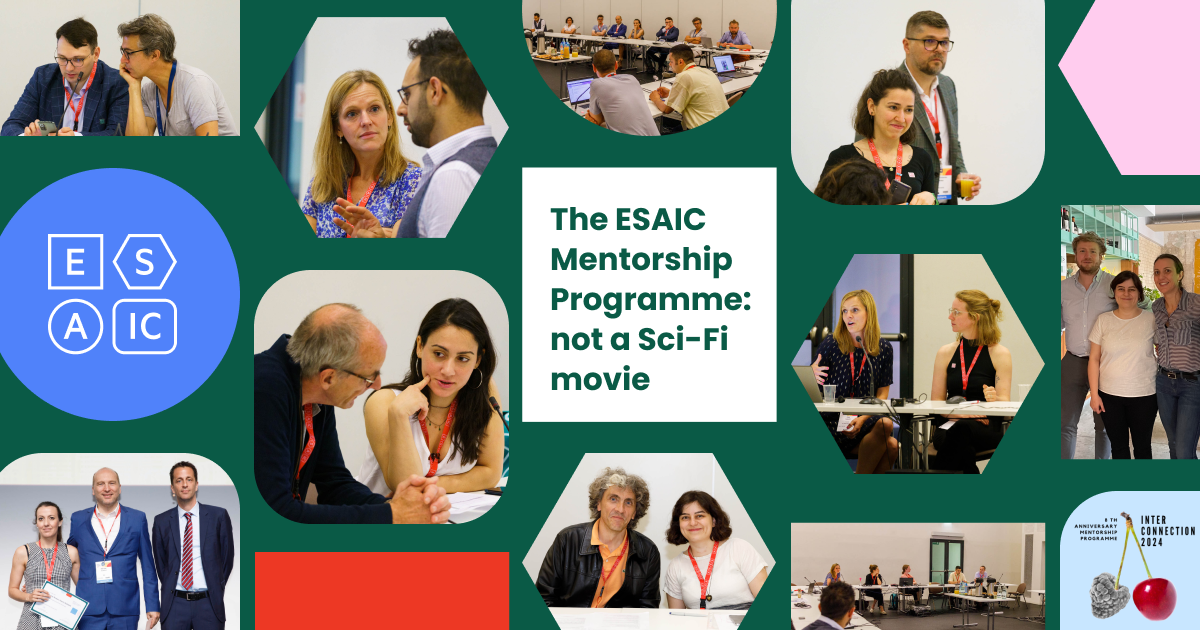ESAIC News
Europe and the World struggle as COVID-19 cases surge - Latest news from the frontlines
Europe and the World struggle as COVID-19 cases surge
The COVID-19 pandemic has gathered pace in multiple European countries, the USA and Australia, and has taken root in almost all areas of the world. So far, only Africa has been spared a huge acceleration of cases, but many experts feel it is a matter of when and not if the outbreaks reach the poorest continent. Across the world, borders are being closed, international flights cancelled and other extensive travel restrictions implemented as countries try to prevent increases in cases that will overwhelm their health systems.
Since ESAIC’s last update to members on March 13, both Italy and Spain have overtaken China in terms of the number of recorded deaths from COVID-19. Italy is on the verge of also taking over China in terms of number of confirmed cases: the toll now stands at 80,539 cases and 8,215 deaths. The country is on a nationwide, police and army enforced lock-down. Even the ‘luxury’ of walking a pet outside has been ended.
While there have been encouraging signs that the pandemic might be slowing in Lombardy, the most badly affected region, there are now growing fears of an explosion of cases in the poorer Southern regions. In an open letter to the Italian Prime Minister, the President of the Campania Region (home to Naples) has complained that the central government has not yet provided promised ventilators and other life-saving equipment. Cases and deaths are now increasingly sharply in areas outside the original northern hotspots.
Spain is only just behind Italy, with 64,059 cases and 4,858 deaths. Madrid in particular is struggling with the huge surge in cases and deaths. Tragic reports emerged this week of the army discovering the bodies of elderly residents in care homes, unclear whether they had died from COVID-19 or other causes due to lack of care due to staffing issues at the residences. A huge congress centre has now been turned into a 5,000-bed hospital, and the city’s ice-skating rink is now a temporary morgue. On Thursday, March 26, Prime Minister Pedro Sanchez extended the country’s ‘State of Alarm’, which severely restricts people’s movements, until at least April 12. He said: “I’m convinced that the only efficient option to counter the virus is social isolation.”
In the UK, social distancing measures had been relatively absent. However, things began changing rapidly on Friday, March 20, with Prime Minister Boris Johnson ordering the closure of schools, followed by pubs and restaurants. By the end of Monday, March 23, all non-essential businesses were ordered to close, and people told they should not leave home except for vital food shopping, for medical appointments or the pharmacy, or to do one form out outdoor exercise per day. Cases in the UK now stand at 14,543 and deaths at 689. Concern is increasing that London, which is ahead of the rest of the UK in the pandemic, will struggle with intensive care bed capacity very soon, and that social distancing measures are not working – television images of packed tube trains continue to be shown each day. There are also rapid increases in cases and deaths in the West Midlands and Wales.
In the past two days, the UK has also been shown in no uncertain terms that COVID-19 can affect absolutely anyone. On Thursday, March 26, it was announced that Prince Charles, second in line in the UK monarchy, had tested positive and was self-isolating in Scotland. And then today (March 27), another bombshell announcement – that UK Prime Minister Boris Johnson is also infected, and is self-isolating at 10 Downing Street while, for now, continuing to lead the government. The Health Secretary, Matt Hancock, has also tested positive, and now the Chief Medical Officer Professor Chris Whitty is at home under self-isolation after experiencing symptoms.
Germany seems to have recorded one of the lowest death rates so far from COVID-19, with reports suggesting this could be due to its high testing rate (including many people who had mild symptoms). Its rigorous contact tracing of cases has also helped interrupt transmission, and so far, only around 20% of those known to be infected have been over 60 years old, far lower than in other countries. To date Germany has had 42,288 infections but only 253 deaths. However, there are now fears the country could face an explosion of cases and deaths similar to some of its neighbours. Reports have emerged that Germany is considering implementing track and trace technology to help fight the pandemic, and also wanting, like the UK, to do mass antibody testing as soon as is feasible to determine who is immune due to past infection.
France now has almost 30,000 COVID-19 diagnoses and almost 1,700 deaths. Prime Minister Édouard Phillipe has warned that within 48 hours, the health system could be at full capacity with COVID-19 cases. Tragically, a 16-year-old girl with no known underlying conditions has become one of the latest people to die from COVID-19. In other developments, on March 26, the French government authorised the use of chloroquine, an anti-malarial drug, to treat hospitalised coronavirus patients. This decision has been taken even though clinical trials have not yet been completed. US President Donald Trump has also hailed this treatment as a gamechanger even though these trials are ongoing.
Belgium also remains in lockdown, with more than 6,000 cases confirmed and 220 deaths. Public health experts there are expecting the peak of cases in early April, though this is dependent on social distancing measures being effective. And in Romania, strict quarantine measures were applied on Wednesday, March 25. Some 5,600 citizens were fined on that first day for leaving their homes for no good reason. The country has seen 1,029 cases and 17 deaths.
WHO has said that it fears the USA could be the next hotspot of global cases, indeed some experts say it already is. There are more than 86,000 confirmed cases and more than 1,300 deaths due to COVID-19; however, due to the USA’s failure to provide adequate tests, there are fears the true scale of the pandemic is many times this. New York (both City and State) are battling the largest epidemic, with almost 40,000 cases. The iconic Times Square in New York City is now a lonely place, reflective of many other cities in lockdown worldwide.
President Trump has caused amazement by suggesting social distancing measures could be reduced by April 12, the Easter weekend. He continues to talk about having America open for business as soon as possible, and reports suggest his patience is running out for Dr Anthony Fauci, the world-renowned expert who heads the NIH’s National Institute of Allergies and Infectious Diseases. Dr Fauci has been forced to repeatedly challenge and correct assertions made by the President, something Trump has rarely tolerated in the past. Without Fauci, who also led the USA’s response to HIV/AIDS, the credibility of the US efforts to battle the pandemic would be seriously undermined.
It is not only the US President that has shocked people with his reaction to the pandemic. Brazil’s President Jair Bolsonaro should have been self-isolating after a trip to the USA (including a meeting with President Trump) in which many of his delegation subsequently tested positive for COVID-19. Instead, he stunned the public by attending a protest and embracing members of the public for selfies and other publicity. He is now facing growing resentment and protests from Brazil’s population for his perceived poor handling of the crisis.
Bolsonaro also stunned the entire nation with a televised address two days ago in which in he tried to play down the pandemic, and undermine efforts by state governors to close schools and implement quarantine measures. There are fears thousands of extra lives may be lost due to the President’s poor leadership. There are currently 2,915 cases and 77 confirmed deaths from COVID-19 in Brazil.
WHO has continued its daily briefings and situation reports throughout this crisis. On Thursday, March 26, WHO Director-General Dr Tedros Adhanom Ghebreyesus addressed an extraordinary virtual meeting G20 Heads of State focussed on COVID-19. He told them: “You have come together to confront the defining health crisis of our time: We are at war with a virus that threatens to tear us apart – if we let it.“ He welcomed the G20‘s initiative to find joint solutions and work together, saying ‘This is a global crisis that requires a global response.’
He also appealed to the leaders of these, the World’s richest 20 countries. First, he urged leaders to fight without excuses, without regrets – thanking countries who have already taken steps and urgently asking that they do more. Second, he encouraged them to unite, stressing that no country can fight this alone, and calling on all countries to build on the solidarity already sparked by the crisis. Third, he asked them to ignite a global movement to ensure this never happens again.
Tony Kirby
The latest WHO Situation report containing global updates of cases and deaths can be found here:
https://www.who.int/emergencies/diseases/novel-coronavirus-2019/situation-reports










